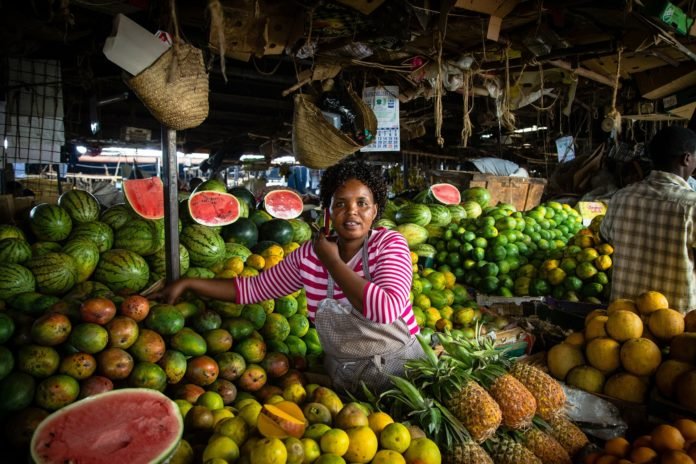Microfinance refers to a type of banking service that provides financial services to low-income individuals or groups who otherwise have no other access to financial services. It gives them an opportunity to become self-sufficient by providing savings, loans, and insurance. In this post, we will discuss the viability of investing in peer-to-peer microfinance loans as an investment opportunity.
 )
)Microfinance loans are a bridge for people with limited resources to become more entrepreneurial and productive. Most of these people are small business owners. And in most cases, they are locked out of credit brackets by banks. Microlenders give out loans in small amounts (often $100 to $250 per loan) to allow small business owners in developing countries to buy inventory or small machinery to increase their productivity and grow their business. Peer-to-peer microfinance lenders want to give individuals in the developing world the opportunity to directly lend to these type of individuals and small business.
Zidisha
Zidisha is one of the first online microlending platforms and has been of great help to many small entrepreneurs in the developing countries it services. It directly connects lenders and entrepreneurs without a local microfinance intermediary in between. Zidisha offers a person to person lending platform that lets lenders and entrepreneurs interact and communicate openly.
Many of the young adults in developing countries are now online. They have varied skills and knowledge though they lack the resources to live up their ambitions. Most banks within their reach charge high interest rates or don’t lend to them at all. But through Zidisha, many young entrepreneurs now have access to the funding they need to start or grow their small businesses.
African BusinessAn entrepreneur with funding needs can apply for a loan on Zidisha. Potential private lenders then get to read about the business and its funding need and can decide to chip in to fund the loan request. Once the loan is fully funded, the entrepreneur confirms acceptance and it is disbursed to him or her. From there on, the lenders and borrowers can communicate directly using the discussion tab found on each of the loan profile. The entrepreneur will make his or her repayments monthly or weekly and they are credited directly into the lenders’ Zidisha account.
MyC4
MyC4 is another online peer-to-peer microfinance lender. An entrepreneur in a developing country with a financial need visits a local MyC4 partner and presents his need i.e. how much money and how much he can pay in interest. The MyC4 partner makes a thorough evaluation of this business and makes a decision to make sure that it has the potential for growth and repayment. If it is approved by the MyC4 partner, it is uploaded to the MyC4 marketplace where other investors read about it and invest in it. With MyC4, there’s normally an auction where investors bid the amount they can lend and at what rate. The lenders offering the lowest rates win the auction and end up lending to the individual.
Unfortunately, MyC4 has ceased to take on new investments due to issues it has with a local microfinance partner in Kenya.
“At the moment it is, unfortunately, not possible to sign up or bid on loans as an investor on MYC4. This is due to MYC4’s decision to take a Timeout for uploads of new loans to borrowers in Kenya following a major dispute with one of our Provider partners in Kenya, KEEF, who have wrongfully decided to neglect their obligation to repay a large amount to MYC4 investors. Until this situation has been normalized there will consequently be no Kenyan entrepreneurs benefitting from a loan through MYC4 and it makes no sense to allow existing or new investors to upload money which cannot benefit an African borrower. We apologize for this circumstance and hope to be able to restart lending activities soon again.”
Kiva
Kiva is another peer-to-peer microfinance lender. However, it is a charity and not a return generating lender. Just like Zidisha and MyC4, a borrower applies for a loan. The loan then goes through underwriting and approval process and once approved it is posted to Kiva for lenders to invest in it. Lenders crowd fund the loan on increments of $25 or more and once complete, the borrower is given the funds. The borrower repays the loan and the lenders use the repayments to fund new loans, donate or withdraw the money.
Should you invest in peer-to-peer microfinance loans?
Peer-to-peer lending is a viable and useful tool for the empowerment of small business owners. However, in my opinion, the peer-to-peer microlending ecosystem is currently still too small to invest large amounts (as scalability is a big issue for peer-to-peer microlenders) and there is too much risk involved for it to make financial sense. Furthermore, if the microlending platform is using local partners the issue of corruption is too high and too prominent (as seen by MyC4s issue in Kenya). Hence, I would currently not recommend investing in peer-to-peer microfinance loans.
However, if you are keen on empowering people in developing countries, then investing small amounts in microfinance loans as opposed to local peer-to-peer loans or corporate bonds is a viable option. But the intention has to be wanting to give as opposed to making an investment with the expectation of strong returns.
I originally posted this article on my personal finance blog http://www.smartmoneysmartliving.com